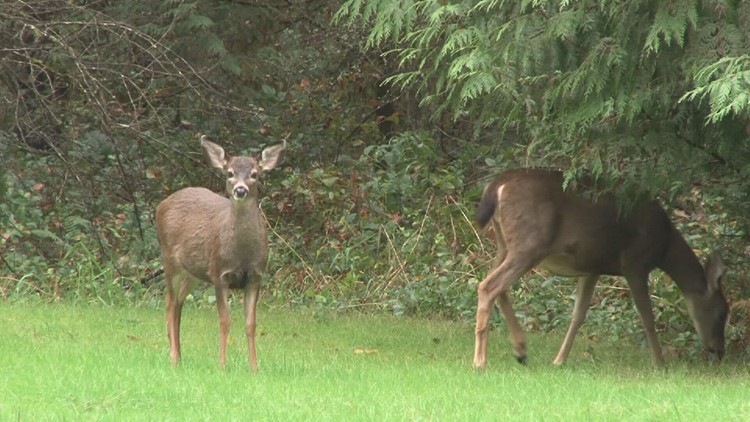ST. JOSEPH COUNTY, Mich. — The Michigan Department of Natural Resources (DNR) has detected epizootic hemorrhagic disease in a deer in southwest Michigan for the first time in three years.
Epizootic hemorrhagic disease (EHD) is a common disease that is sometimes fatal. It is most often found in animals like white-tailed deer, elk or mule deer.
EHD was detected in a deer in St. Joseph County. Tests are pending on other deer to see if they also have the disease. The DNR reports that there are up to 120 probable cases of EHD in St. Joseph County.
The disease is spread by a fly called a midge. It cannot spread between deer.
It is also not believed to be able to be contracted by humans or household pets.
“Although early reports indicate 2024 could see a significant outbreak of epizootic hemorrhagic disease in pockets of Michigan’s deer population, this isn’t necessarily unusual,” said Chad Stewart, acting supervisor of the DNR Wildlife Division's Sustainable Populations Section.
EHD outbreaks are characterized in the following ways, according to the DNR:
- Sick and dead deer are found in or around bodies of water.
- Illness in deer can come on suddenly and severely but also can linger for weeks or months in a low-grade state.
- In severe forms of the disease, deer lose their appetite and their fear of humans, grow progressively weaker, salivate excessively and finally become unconscious.
- Due to a high fever and dehydration, infected deer often seek water to lower their body temperature and to rehydrate.
The weather can influence how common EHD outbreaks are. A warm spring followed by a rainy July and dry August can make outbreaks more likely, as there are more warm, muddy areas for the fly to lay its eggs.
With many Michiganders looking forward to hunting season, the DNR is stressing the importance of reporting possible EHD cases.
“If you suspect a deer death is due to epizootic hemorrhagic disease, please report it to the DNR so that we can track cases and better estimate the total number of deer affected in an area,” Stewart said. “Hunters’ observations can be especially helpful as they hit the field and look around this fall.”
While you shouldn't eat meat from a visibly sick deer, the DNR said there is no indication that EHD can be passed to humans by consuming venison.
There is no known treatment for EHD in wild animals.
There are expected to be additional cases of EHD in the coming weeks.



